Most young-earth creationists hold the Flood responsible for forming most of the geologic rock layers around the world. But how exactly did it do that? What force of nature could rapidly convert miles of sediment and billions of living organisms to a vertical succession of fossil-bearing rock layers across all the continents? Curious minds need to know!
The following article is a summary of Dr. Andrew Snelling’s study of the Tapeats Sandstone, Bright Angel Formation, and Muav Formation, and of the surrounding discussion and research pertaining to it. The views expressed do not necessarily reflect those of New Creation.
In order to properly understand the Flood’s impact on our planet, we cannot remain content with “The Flood did it.” Creationists should aim to understand how the Flood did it from the clues it left behind.
Ongoing research by Dr. Andrew Snelling, head geologist of Answers in Genesis, aims to help resolve this mystery in regards to a sequence of rock layers in the Grand Canyon called the Tonto Group.
McKee and Me (and the Tonto Group)
The Tonto Group
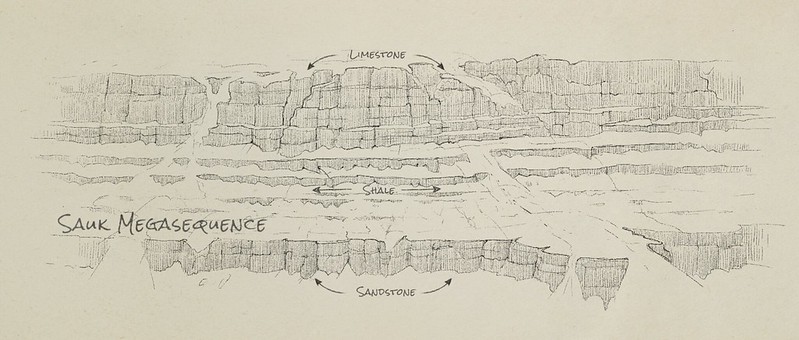
The Tonto Group is a textbook example of a marine transgression.1 In geology, “transgression” describes the advancement of the sea as it spreads over a land surface.2 The evidence left behind by a marine transgression usually consists of rocks with fine grains on top and coarser grains on the bottom. Both the top and bottom will have an erosional surface called an unconformity.
An erosion surface directly underlies the Tonto Group. We call this the Great Unconformity. The Tonto Group itself consists of three main units. On the bottom, the Tapeats Sandstone, a roughly 100- to 330-foot thick group of layers made mostly of―you guessed it―sandstone. Above is the Bright Angel Formation, a 325- to 450-foot thick stack of mostly shale and siltstone (made from clay and silt respectively).3 Finally, the topmost portion of the Tonto Group is the Muav Formation,4 a 136- to 827-foot thick deposit mostly composed of limestone (made from lime mud), but also siltstone. Another unconformity overlies these layers.
While not the first to study it, American geologist Edwin McKee produced the most comprehensive early research on the Tonto Group in 1945.5 You may be under the impression that lower rock layers are older than the layers above them. This is generally true. But McKee made several observations suggesting the Tonto Group was an exception. For example, there are many places in the Grand Canyon where the Tapeats Sandstone pinches out. In these places, the Bright Angel Formation lies directly over the Great Unconformity. This suggests that all main units of the Tonto Group formed simultaneously, but in different places at any one time. McKee realized that the sand to clay/silt to lime mud pattern seen in the Tonto Group was similar to that forming in coastal areas today. This understanding has particular relevance to marine transgressions.
You Shall Know Them by Their Grain Size
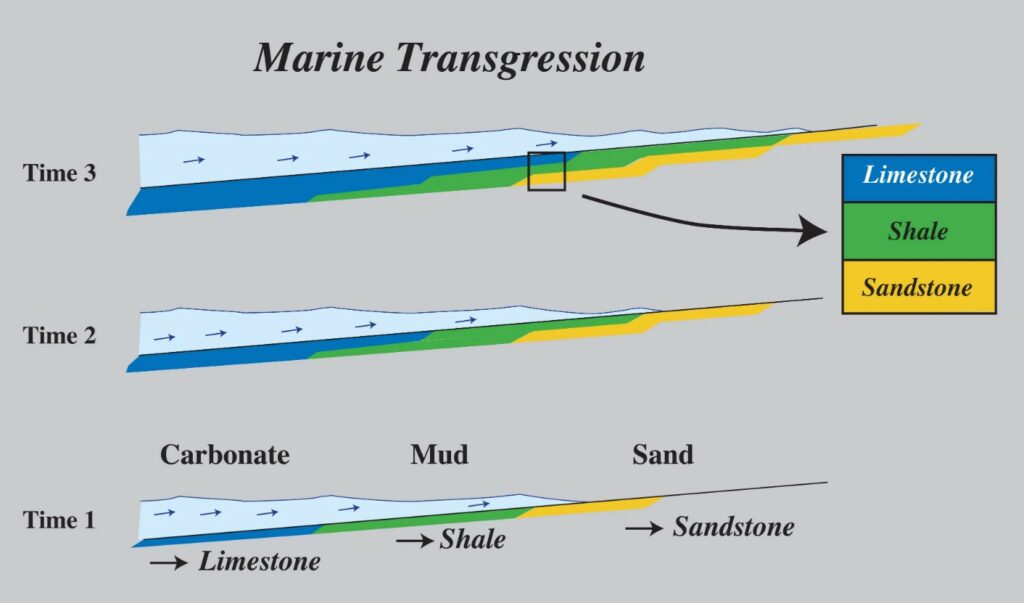
Different types of sediment grains sink to the bottom at different rates. Sand can deposit in very fast water, so water mostly deposits it right along the shoreline. This is why we have sandy beaches. Silt and clay particles, however, possess slower settling velocity than sand. In most cases, they are not deposited in fast-moving water like sand particles. This means that clay and silt generally settle in low-energy, deeper water just offshore.
Lime mud usually requires even slower water in order to be deposited. This causes it to accumulate even further and deeper offshore where the water current is weakest. Unlike the aforementioned sediments, lime mud is a chemical precipitate. More specifically, it initially forms when minerals like aragonite and calcite precipitate out of dissolved calcium-rich water and accumulate on the seafloor. These depositional zones, called facies, will move in reflection to changes in sea level. If the sea level rises, the sand, clay/silt, and lime mud facies move inland. This results in coarse, shallow water sediment being overlain by fine, deeper water sediments. However, if the sea level drops, fine, deeper water sediments get overlain by coarse, shallow water sediment.
McKee’s New Model
McKee’s instrumental work on the Tonto Group helped geologists better understand marine transgressions and the evidence they left behind. McKee came to the tantalizing conclusion that the Tapeats Sandstone, Bright Angel Formation, and the Muav Formation did not deposit one after the other. Instead, portions of each deposited at the same time, but in different locations. McKee hypothesized that the Tapeats Sandstone deposited in a nearshore, high energy environment. The Bright Angel Formation, he thought, formed in a low-energy, offshore environment.
Meanwhile, he figured that the Muav Formation emplaced even further offshore, in even slower water. McKee realized that the Tonto Group layers were actually formed by the “migration” of shallow, middle, and deep marine environments from west to east, with sediments of one environment coming to lie on top of another. As the sea encroached upon the land, the shoreline moved further and further inland. Sand, clay/silt, and lime mud deposited in that specific order. In essence, McKee was envisioning a massive flooding event. But the flood he had in mind was not particularly rapid or catastrophic. It slowly and gradually overwhelmed the Grand Canyon area over a very long period of time.
Rock of Young Ages
It’s Not My Fault That They’re Folded
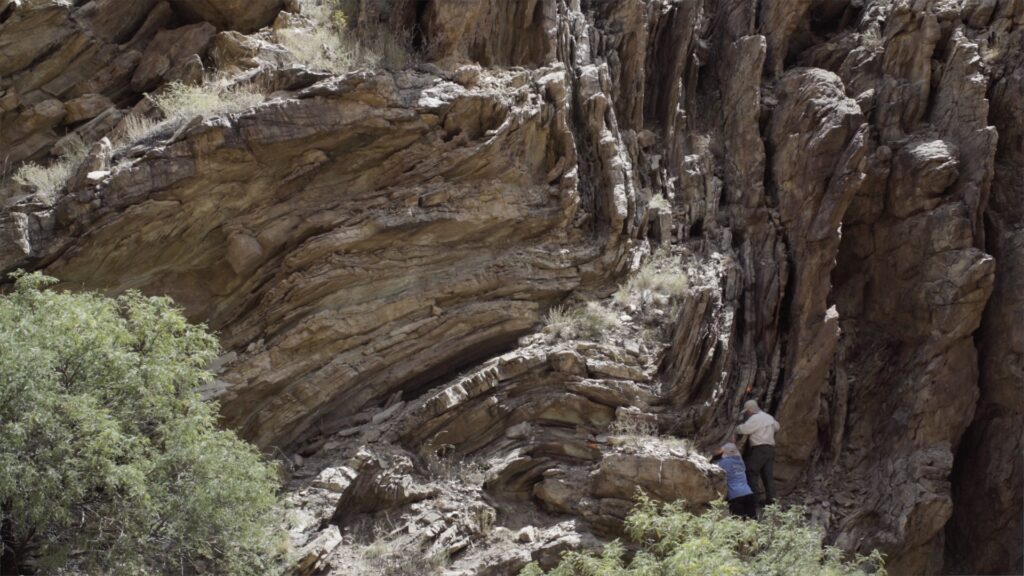

Dr. Snelling has identified several lines of evidence within the Tonto Group that contradict McKee’s slow and gradual scenario. One example are the many locations along the Grand Canyon walls where the Tonto Group layers have been folded. This occurred when movement of the Earth’s tectonic plates crinkled up the Tonto Group layers. This is similar to how a rug scrunches up when pushed against the wall. This pushed up on the Tonto Group layers from below, forging them into a folded angle.
Sedimentary rock cannot bend in its current lithified form. If this uplift occurred after the sediments hardened into rock, the rocks should have faulted and fractured. But the Tonto Group layers did not fault or fracture. Instead, they folded, sometimes at angles of 90°! This indicates that the “rocks” must have still been soft, wet, and pliable at the time of the uplift.6 Clearly, this should not be the case if the sediment was laid down hundreds of millions of years earlier.
Timely Trilobites
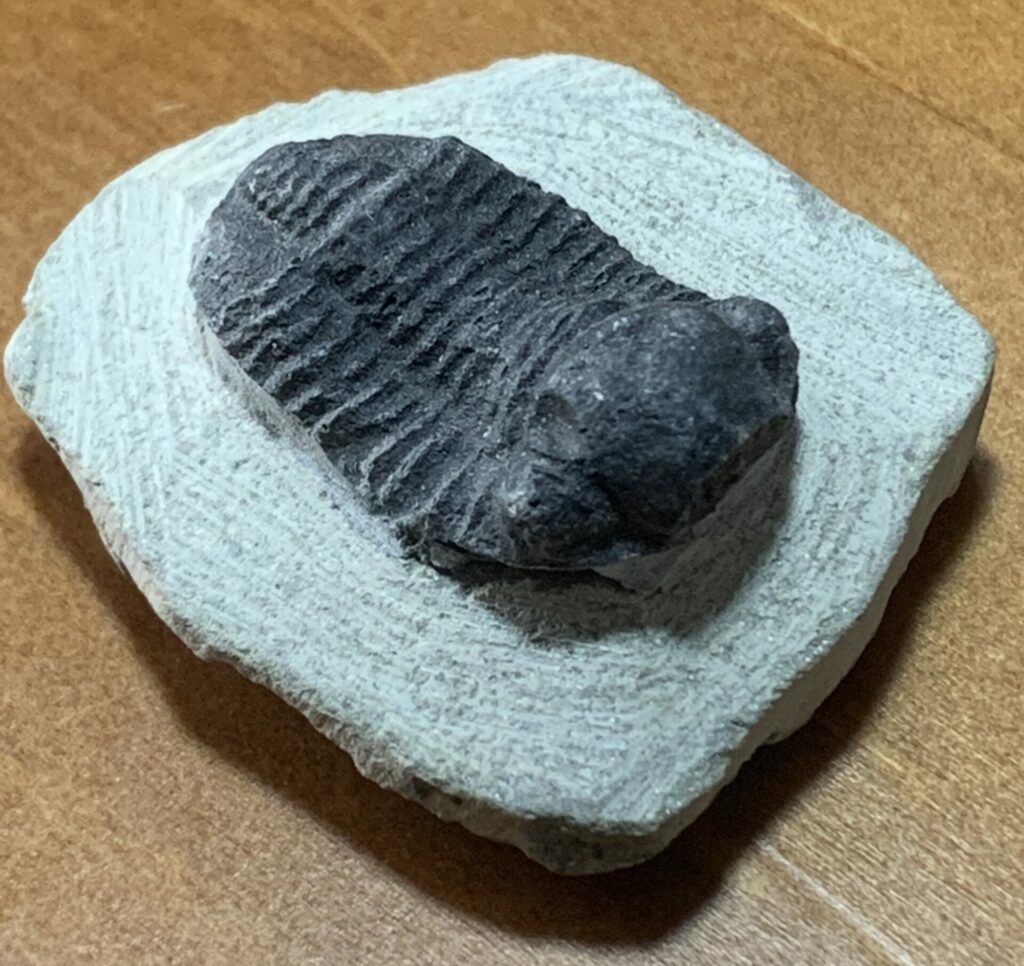
Another problem is the offset of millions of years between fossil trackways and the fossilized animals that left them. Trilobites, for example, are pillbug-like creatures that scuttled along ancient seafloors. Like modern insects, they had no bones. Their skeleton forms a rigid outer surface around the body called an exoskeleton. A trilobite’s exoskeleton is composed of calcite and calcium phosphate.7 They were, for all intents and purposes, “pre-fossilized,” even before death, similar to the exoskeletons of many modern arthropods.
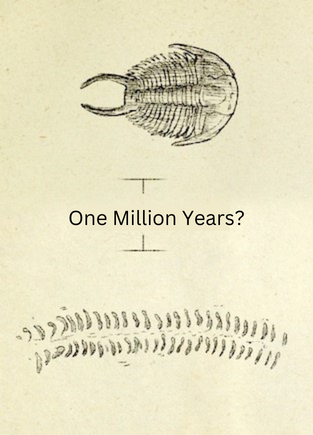
Trilobite Exoskeletons
But the exoskeleton couldn’t grow with its body. Just like insects, trilobites would regularly shed their exoskeleton, forming another and expanding in size before the new one hardens. There is little nutritional value in an exoskeleton, meaning it is unlikely to be consumed by scavengers. This allows for trilobite exoskeleton fossilization without the special conditions required to make most other fossils. If trilobites were alive at a given place at any particular time, they should have left behind shed exoskeletons.
Yet, while trilobite body fossils are plentiful in the Bright Angel Formation and present in the Muav Formation, they are virtually absent from the Tapeats Sandstone. But we know living trilobites existed during the formation of the Tapeats Sandstone because we find their footprints. The Tapeats Sandstone allegedly formed a million or more years before the Bright Angel Formation. So why don’t we find their preserved exoskeletons along with their footprints? The best explanation for this millions-of-years offset is that it was not a millions-of-years offset at all. But we will go more in detail about that later.
Footprints in the Sediment
The trilobite fossils themselves are another line of evidence that the Tonto Group deposit occurred rapidly. Anyone who has left footprints on the beach knows how quickly that environment destroys them. If a fresh layer of sediment rapidly covered trilobite trackways and other trace fossils, distortion from erosion or the movement of other organisms would not occur. Trilobites (aside from their exoskeletons) and other animals would require rapid burial in order to avoid scavenging.
Taken together, these three lines of evidence indicate that the Tonto Group was not the result of a slow and gradual advancement of the sea over a millions-of-years timespan. It was far more rapid than McKee conceived. But it does fit the expectation of what might have happened during the global Flood of Noah’s day.
How Does the Bible Describe the Flood?
Most people envision Noah’s Flood as the world’s biggest blender. They think it mixed all sediment types and lifeforms alive at the time into a single, worldwide chaotic mess of a layer. This misconception comes from an improper extrapolation of flash floods and river floods today.
The Noahic Flood was unlike either one. According to the apostle Peter (2 Peter 3:5-6, ESV), “…the earth was formed out of water and through water by the word of God, and that by means of these the world that then existed was deluged with water and perished.” The oceans God created in the beginning were the same oceans that deluged the world. The process that the Bible is describing is not a flash flood or a river flood. Rather, it is describing a global marine transgression. Therefore, we would expect to see evidence of such an event.
Laying Down the Layers
Several smaller-scale events have occurred in recent history that give us an idea of how layered sediment would form during the global Flood. One study reported some 16 feet of laminated lime mud deposited during Hurricane Andrew in tidal channels in the Bahamas.8 In another, researchers pointed out that hurricanes and other storms can also create layered sand deposits.9 Tsunamis are also able to form sedimentary deposits. In one instance, the infamous tsunami that ravaged the coast of Thailand in 2004 deposited a sheet of sand commonly five to 20 centimeters thick.10 Even though these devastating waves generally only leave a single layer behind in their wake, it is easy to imagine how repeated tsunamis, one after the other, could produce a great many layers in a very short period of time.11
Obviously, the Flood of Noah’s time was far longer and bigger than either of these natural disasters, and thus would have left behind much thicker deposits. The hurricane- and tsunami-like forces occurring during the year-long Flood would have been more than capable of depositing many layers of sediment on what was once dry land.
As McKee noted, marine transgressions leave significantly different types of evidence than other varieties of floods. We should not be looking to local floods or flash floods to understand Noah’s Flood. Noah’s Flood was completely unique and unlike any event that has occurred before or since.
Flood Model
Dr. Snelling’s proposed model to explain the Tonto Group is a developed and updated version of Dr. Steve Austin’s model put forward in 1994.12 Dr. Austin hypothesized that the advancing ocean waters of Noah’s Flood deposited the layers of the Tonto Group. The slower-moving water laid down deep-water, fine-grained sediments and stacked them above shallower-water, coarser-grained sediments, just as McKee described. The primary difference is that the Tonto Group was laid down under far more catastrophic conditions. Dr. Snelling likens them to those of hurricanes and tsunamis of modern times, but much bigger and more powerful.
Follow along with each zone as described in the upcoming paragraphs by referring to the diagram presented below.
Great Unconformity
Zone 1 – Erosion Zone
Dr. Snelling’s model begins when shallow, fast-advancing floodwaters heavily eroded pre-Flood rocks (mostly granites and metamorphic rocks). It reduced the entire region to a vast, featureless plain. Research by geophysicist John Baumgardner suggests that the process at work here was cavitation.13 This is when vacuum bubbles form in very fast-flowing water which creates low pressure. If the pressure gets low enough, these bubbles implode like little packets of dynamite. If you are a boater, you have probably seen the effects of cavitation on your boat’s rudder. This, Dr. Snelling thinks, is the mechanism involved in creating the Great Unconformity.
Nothing was being deposited in Zone 1. The water here was too powerful and only resulted in erosion of the bedrock. A bottom-surging undertow carried all boulders and sediment produced by the erosion event west.
Tapeats Sandstone
Zone 2 – Pebble Zone
Above the Great Unconformity we find coarse pebbles and car-sized boulders at the base of the Tapeats Sandstone. Dr. Snelling suggests that the water responsible for this accumulation was flowing about 1.5 meters per second. This would have been the ideal speed to deposit boulders and pebbles while still carrying away all of the clay, silt, lime mud, and sand. At this point, the floodwaters were still rising in an eastward direction, but the undertow was carrying away all other types of sediment except the boulders and pebbles.
Zone 3 – Sand Zone pt. 1
In the deeper water behind the pebbles and boulders, the undertow had slowed to just 1 meter per second. This was slow enough for sand grains to accumulate on the water bottom, but mud and lime mud particles continued to go with the flow. The sandstone is made up of criss-crossed layers called cross bedding. These are similar to what hurricanes produce today along the seashore of the eastern United States.
Zone 4 – Sand Zone pt. 2
While still too fast to deposit either type of mud, the waters were beginning to form ripples in the topmost deposits of the Tapeats Sandstone. Trilobites and other seafloor creatures were trying to escape impending doom. And for a time they did, as trilobites left only footprints, no body fossils, in the Tapeats Sandstone.
Dr. Baumgardner’s calculations suggest that tsunami-like conditions could have deposited as much as nine meters of sediment a day (0.38 meters per hour).14 This means that the Tapeats Sandstone could have been deposited within a three to ten day window.
Bright Angel Formation
Zone 5 – Clay/Silt Zone
As the zones that would become the Tapeats Sandstone continued their march inland, the undertow finally slowed to just 0.5 meters per second. The water was slow and deep enough for clay and silt particles to fall to the water bottom, but still too fast to deposit lime mud. By this point, animals like trilobites were apparently beginning to tire, because it is at this point where their body fossils begin to appear. Additional animals that begin to show up include mollusks (such as brachiopods) and sponges.
For a long time, geologists thought water could not quickly deposit fine-grained sediment, like clay and silt, in any vast amount. If this was the case, it would have taken millions of years to form the Bright Angel Formation. However, flume experiments in 2007 discovered that mud particles in fast-flowing water lump together and form larger clusters, allowing them to accumulate on the water bottom at a much faster rate.15 The scientists conducting the flume experiments concluded that their results call for a re-evaluation of previous studies of shale and siltstone deposits throughout the geologic record.
Muav Formation
Zone 6 – Lime Mud Zone
The Muav Formation was overlain across the Tapeats Sandstone and Bright Angel Formation where the water was deepest and slowest-moving. By this point, it was flowing less than 0.5 meters per second. As with clay and silt, most geologists have traditionally thought that thick deposits of lime mud must require very long periods of time to form. However, flume experiments similar to the ones described above have also been conducted on fine-grained sediments, such as lime muds.16 The researchers identified similar results to their previous analysis, concluding that lime mud particles can also flocculate in fast-flowing water and thus accumulate on the water bottom at a much faster rate than previously thought.
It is thought that lime mud was the dominant sediment across pre-Flood seafloors, having already accumulated on the seafloor over the millenia leading up to the Flood. When the Flood began, it transported and deposited the lime mud by water currents overtop the Bright Angel Formation.
What Happened Next?
As mentioned earlier, there is another unconformity capping off the Muav Formation. Unlike the Great Unconformity, the unconformity overlying the Muav Formation is a disconformity, meaning there is little physical evidence that erosion occurred. This may be because the current had become so weak in this area that the laying down of significant amounts of sediment had ceased. This reduction in water strength and the presence of deep water sedimentation (lime mud) indicates that the water was very deep over the Grand Canyon area by this point.
Can We Globalize the Conclusions about the Tonto Group in the Grand Canyon?
The model developed by Dr. Snelling (and originally proposed by Dr. Austin) provides a compelling explanation for the vertical succession of layers making up the Tonto Group in the context of the first few parts of Noah’s Flood.
However, we should not get ahead of ourselves and think we have “proven” the Flood. The model described above attempts to explain the evidence of a single location on this very big planet of ours. We must do more work to see if we can apply this model to other places around the world.
While research is ongoing, there are tantalizing lines of evidence that suggest that this may indeed be the case. The Great Unconformity has been identified on all continents (with the possible exception of Africa).17 In addition, the successive layers of the Tonto Group are not secluded to the Grand Canyon region. Their equivalents have also been identified across the continent of North America, and from Greenland, the United Kingdom, Russia, and Israel, to Australia, Ghana, portions of Peru, Argentina, and Bolivia, and beyond.18,19,20 This is strong evidence that sea levels were rising all over the world at the same time! It is little wonder that even old-earth geologists acknowledge this worldwide sea level rise as one of the most dramatic marine transgressions in history!21
Conclusion
McKee’s discovery of the Tonto Group, along with its equivalent rock units around the world, provide excellent evidence for a rapid marine transgression on a global scale. Moreover, they also provide us with a window into the past. Studying these rocks carefully may help us get a better understanding of what was going on within the first few days or weeks of the worldwide Flood of Noah’s day.
Learn More About the Tonto Group:
Footnotes
- It is actually the example used in the textbook I used in my earth history course in college! ↩︎
- Boyd, S. 2016. “The Last Week before the Flood.” Answers Research Journal, 9, 197–208. ↩︎
- This formation is usually called the Bright Angel Shale, but it was renamed on account of it containing only about 40% shale. The majority is actually composed of about 30% siltstone and about 30% sandstone. ↩︎
- Though often called the Muav Limestone, it has recently been renamed because it also contains large amounts of medium silt- to fine sand-sized quartz and K-feldspar grains, and siltstone, in addition to limestone. ↩︎
- McKee, Edwin D. 1945. “Stratigraphy and Ecology of the Grand Canyon Cambrian: Part 1. Cambrian History of the Grand Canyon Region.” Carnegie Institute of Washington Publication 563, 1–168. Washington, DC: Carnegie Institute of Washington. ↩︎
- Critics have provided various so-called “rescue devices” to try and explain away this evidence. Please see the appendix where this matter is addressed. ↩︎
- Teigler, Dian. 1975. “Microstructure and Composition of the Trilobite Exoskeleton.” Fossils and Strata. 4. 137-149. ↩︎
- Shinn, E. A., Steinen, R. P., Dill, R. F., & Major, R. 1993. “Lime-mud layers in high-energy tidal channels: A record of hurricane deposition.” Geology, 21(7), 603-606. ↩︎
- Duke, William L. 1985. “Hummocky Cross-Stratification, Tropical Hurricanes, and Intense Winter Storms.” Sedimentology 32, no.2 (April): 167–194. ↩︎
- Jankaew, K., Atwater, B. F., Sawai, Y., Choowong, M., Charoentitirat, T., Martin, M. E., & Prendergast, A. 2008. “Medieval forewarning of the 2004 Indian Ocean tsunami in Thailand.” Nature, 455(7217), 1228-1231. ↩︎
- Baumgardner, J. 2018. “Understanding how the Flood sediment record was formed: The role of large tsunamis.” In Proceedings of the Eighth International Conference on Creationism, ed. J.H. Whitmore, pp. 287–305. Pittsburgh, Pennsylvania: Creation Science Fellowship. ↩︎
- Austin, Steven A., Editor. 1994. Grand Canyon: Monument to Catastrophe. Santee, California: Institute for Creation Research. ↩︎
- Baumgardner, 2018, 287–305. (Footnote 11) ↩︎
- Baumgardner, 2018, 287–305. (Footnote 11) ↩︎
- Schieber, J, Southard, J. B., & Thaisen, K. 2007. “Accretion of Mudstone Beds from Migrating Floccule Ripples.” Science 318, no. 5857 (December 14): 1760–1763. ↩︎
- Schieber, J., Southard, J. B., Kissling, P., Rossman, B., & Ginsburg, R. 2013. “Experimental Deposition of Carbonate Mud from Moving Suspensions: Importance of Flocculation and Implications for Modern and Ancient Carbonate Mud Deposition.” Journal of Sedimentary Research 83, no. 11: 1025–1031. ↩︎
- McDannell, K., et al. 2022. “Thermochronologic constraints on the origin of the Great Unconformity.” Proceedings of the National Academy of Sciences, 119 (5). ↩︎
- Clarey, Timothy L., and Davis J. Werner. 2018. “Global Stratigraphy and the Fossil Record Validate a Flood Origin for the Geologic Column.” In Proceedings of the Eighth International Conference on Creationism. Edited by John H. Whitmore, 327–350. Pittsburgh, Pennsylvania: Creation Science Fellowship. ↩︎
- Morton, G. R. 1984. “Global, Continental and Regional Sedimentation Systems and Their Implications.” Creation Research Society Quarterly 21 (1): 23–33. ↩︎
- Snelling, A. A. 2010. “The Geology of Israel within the Biblical Creation-Flood Framework of History: 2. The Flood Rocks.” Answers Research Journal, 3, 267–309. ↩︎
- Karlstrom, Karl E., James W. Hagadorn, George E. Gehrels, William Matthews, Mark D. Schmitz, Lauren Madronich, Jacob Mulder, Mark Pecha, Dominique Giesler, and Laura J. Crossey. 2018. “Cambrian Sauk Transgression in the Grand Canyon Region Redefined by Detrital Zircons.” Nature Geoscience 11 (28 May): 438–443. ↩︎

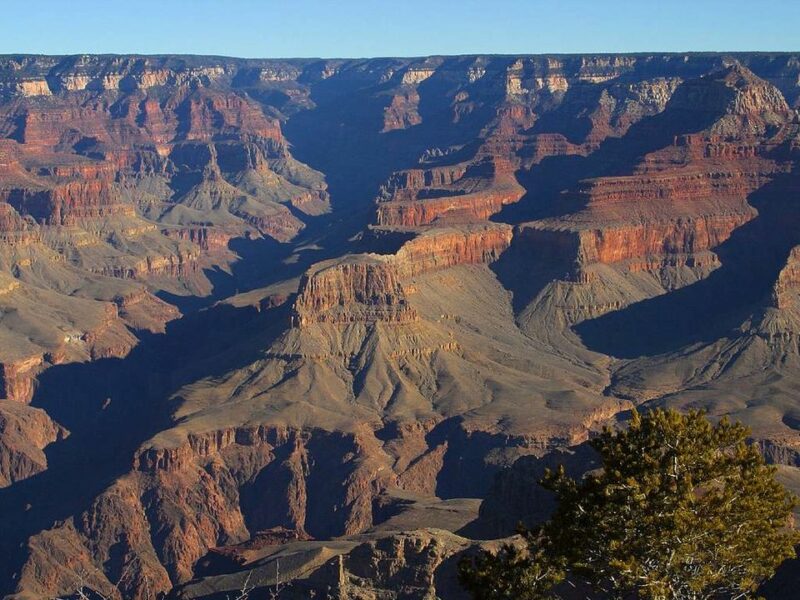
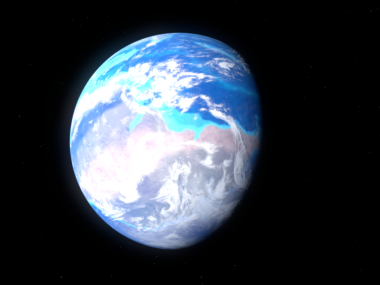





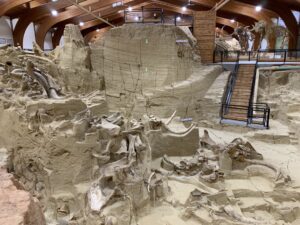



Great article on a well researched subject by these creationists. a big subject. I want to include a few points I think matter.
It should be a option after the flood that great events also created sedimentary layers.
Then I suggest the great mechanism in the flood year was fantastic moving water surges from the breaking up single continent. it was these great surges that deposited and hardened sediment instantly. The first part of the year.
As to areas without such sedimentary covering. simple. Either the breaking continent with volcanic eruptions knocked off what was layered or didn;’t allow any layering. I suggest pre flood rocks are not touched by the flood except bringing everything higher up. Noah never saw any rocks we see todat. none.
anyways another great article on this NEWCREATION.
Hello brother Ryann!!! I really like his publications on geology and paleontology and the defense of the universal flood.
A question!! What do you think of the silly videos of Dipper dino who accuses Sneeling of being a liar? I understand that he refuses to debate Standing for truth.
I will wait for his response, blessings in Christ!
Hello Andres,
Thank you for your kind remarks! We at the New Creation blog think Dr. Snelling is doing excellent work, even though he gets a lot of flack from anti-creationists. I think one of the problems with a lot of Dr. Snelling’s critics is that they are approaching his research with the presupposition that young-earth creationism is not good science. This worldview colors their interpretation of not only scientific data in general, but also creationists’ interpretations of the data. As a result, their arguments against creation researchers tend to be uninformed.
Can I download your podcast to my MP3 player? I enjoy taking my dog for a walk and listening to creation podcasts.
Hello, Tom! Thank you for your interest in our podcast. On Spotify there is a download button to the left of the play button for each episode. It looks like a circle with an arrow pointing downwards inside of it. If you press that, you should be able to download the episode to your phone. I’ve attached a photo below showing the location of the download button. There are mp3 converters if you need that type of file.
Thank you Christian for your prompt reply, I will give it a try.
I’m thinking that the effect of the moon needs serious consideration.
1) We know the moon is slowly receding from the earth into a higher orbit. This is due to energy transfer from earth’s tides to the moon. Earth’s tides are dragging the moon eastward. (We usually consider only that the moon drags earth’s waters into what we call tides.)
2) The moon was obviously closer to the earth in the past, having a greater effect on earth’s tides; and a greater effect on the acceleration of the moon into an outer orbit.
3) Imagine, then, an earth, 4000+ years ago, completely surrounded by water. No mountains to block the flow of tides. Those tides would cascade into monstrous bulges on every rotation of the earth.
4) Those flood tides would have had an exponentially greater effect on the moon, implying that the moon was exponentially closer to the earth and at a faster lunar orbit.
5) Monster tides would also suggest that the earth rotated faster in the distant past. Days were shorter.
6) Monster tides do not necessarily imply turbulence. The Ark may have sailed relatively calm waters.
7) Monster tide flow rates could have suspended tremendous quantities of soil.
8) Twice a day those earth suspensions would roll across the continents, depositing a layer on each pass.
9) The tangential friction on the continents due to tidewater flow would have produced a force vector on the continents.
10) If the continents are floating on magma with low viscosity, the force vector could shove them around.
11) This theory should lend itself to computer simulation.
Hello Donald,
I do not know of any research specifically on the influence of tides during the global Flood, but I imagine that they would definitely have been a pretty important factor. It would make a good research project for someone with interest in tides. 🙂
This is very helpful, thank you. Why were the trilobites found without their exoskeletons?
Hello Catherine,
I’m glad you enjoyed my article! Like all arthropods, a trilobite’s exoskeleton cannot grow with its body. So they must shed their old exoskeleton from time to time and allow their body to expand in size before the new exoskeleton hardens.
Thank you, but why did none of the fossils have their exoskeletons? And where are their exoskeletons? Why weren’t they also fossilised? I mean was there a pile of shed exoskeletons found too? When the wave of sediment drowned the trilobites, did the pressure disintegrate their exoskeletons or what?
I don’t think you can argue that the model “developed” by Dr. Snelling provides a compelling explanation for the vertical succession of layers making up the Tonto Group. It wasn’t developed by Dr. Snelling at all – it is 100% the work of Dr. Austin – Snelling just lifts the transgression diagram from Austin’s book. Citing Austin (1994), Snelling (2021) argued that the Tapeats Sandstone was deposited by currents ranging from 0.5 to 1.5 meters per second (1 to 3 miles per hour). According to Austin and Snelling, these slow currents represent the violent onset of the global Flood. Snelling then proceeded to cite the 9 meter (30 feet) per day sedimentation rates generated by Dr. Baumgardner’s MABBUL model and claimed that the Tapeats was deposited within 3 to 10 days. A year later, Snelling stated that the entire Tonto Group (Tapeats Sandstone, Bright Angel Shale, and Muav Limestone) was deposited in 3 to 10 days. However, Dr. Baumgardner informed me that flow velocities in MABBUL are between 15 to 20 meters per second as tsunami currents transgress across the land. Thus the currents cited by Austin and Snelling as required for deposition of the Tonto Group are an order of magnitude lower than the currents simulated in MABBUL, a fact never mentioned by Snelling when citing Dr. Baumgardner’s model. It is quantitatively ridiculous to argue that 0.5 to 1.5 m/sec water currents could deliver enough sediment to deposit the Tonto Group in 3 to 10 days. And Dr. Baumgardner’s 15-20 m/sec water currents really can’t deliver that much sediment – the only reason they deliver as much as they do is that his erosion equation scours absurd amonts of rock from the nearshore ocean bottom.
Thank you for your feedback Tim,
While the word “develop” can be used to refer to the origination of a model, I was using it more in the veins of the growth or evolution of an already-existing model. As I stated in the article, “Dr. Snelling’s proposed model to explain the Tonto Group is a developed and updated version of Dr. Steve Austin’s model put forward in 1994.”
In my understanding of his Tonto Group papers, Dr. Snelling is arguing that the entire Tonto Group was formed during the first few days or weeks of the Flood, not specifically three to ten days. Ten days is only a week and a half, not multiple weeks (plural). Rather, the three to ten day estimate is the time he thinks it may have taken each formation to form. So, at the absolute longest, Dr. Snelling is arguing it would have taken 30 days or so to form the entire Tonto Group (Tapeats = 10 days, Bright Angel = 10 days, Muav = 10 days).
And finally, Dr. Snelling does say that Dr. Baumgardner’s flow velocities are too high for sedimentation to occur. That is why the regions experiencing flow velocities of this magnitude are only experiencing erosion, with produced sediments being carried westward by a powerful, bottom-surging underflow current. Sedimentation does not occur until the water in a given region becomes deep and slow enough for sediment grains to drop out of the water column.
I hope this makes sense!
Hey brother Christian Ryan,God Bless
https://biologos.org/articles/flood-geology-and-the-grand-canyon-what-does-the-evidence-really-say
What do you think of this article at the popular level of Biologists?
The authors only cite outdated creationist sources from 1900 to 2012, and that article was published in 2016, and they do not cite creationist sources from 2013, 2014, 2015 or 2016.